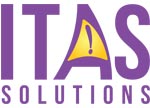In today’s tech-driven world, businesses rely heavily on information technology to operate efficiently. However, ensuring the smooth functioning of IT systems is a complex task. To meet this challenge, companies often turn to IT solutions providers for support. Two commonly used services in this realm are desktop support and help desk. Understanding the differences between these two services is crucial for businesses to make the right choice to meet their specific IT support needs.
Desktop Support Services
Desktop support is a specialized IT service that focuses on addressing end-users individual needs and issues. It involves on-site or remote assistance to users with their hardware and software problems. The primary objective of desktop support is to provide quick and efficient solutions to ensure minimal downtime for employees. Here’s a closer look at what desktop support entails.
Hardware Assistance
Desktop support professionals assist with the installation, maintenance, and troubleshooting of hardware components like computers, monitors, printers, and peripherals. This ensures that employees can work without disruptions caused by hardware failures.
Software Troubleshooting
From resolving software glitches to configuring software applications, Desktop support ensures that employees can access and use the software they need effectively.
Operating System Support
Experts in desktop support help manage and maintain operating systems, including updates and patches, to enhance system security and performance.
Data Backup and Recovery
Desktop support services can play a crucial role in data loss prevention. They help with regular data backups and assist in recovering data in case of accidental deletions or system failures.
Help Desk Services
Help desk services, on the other hand, are designed to provide a central point of contact for end-users to seek assistance and report issues. These services typically handle a wide range of technical problems and inquiries. Here are the key features of help desk services.
Issue Logging and Tracking
Help Desks are responsible for logging, categorizing, and tracking issues and requests. They prioritize incidents based on their impact on the business.
Remote Support
Many help desk services provide remote assistance to resolve problems without the need for an on-site visit. This is particularly beneficial for resolving software and configuration issues.
Knowledge Base
Help Desk teams often maintain a knowledge base of frequently asked questions and common issues, enabling them to provide quick and consistent solutions.
Escalation
Complex or unresolved issues can be escalated to other IT support teams, such as desktop support, for further investigation and resolution.
Choosing the Right IT Support Model
The decision to choose between desktop support and help desk services should be based on the unique requirements of your organization. Factors to consider can include the size of your business, the nature of your IT infrastructure, and your budget constraints. Smaller companies with limited IT infrastructure find desktop support services to be a cost-effective and tailored solution to their needs. It ensures that their IT systems run smoothly without the need for a dedicated in-house IT team. In contrast, larger organizations with more extensive IT ecosystems might benefit from a combination of both desktop support and help desk services.

Understanding the differences between desktop support and help desk services is essential for businesses looking to optimize their IT support. By partnering with ITAS Solutions’ desktop support services in Houston, businesses can ensure their IT infrastructure is robust, secure, and supported by a team of experienced professionals. We provide a range of IT managed services like data loss prevention, business monitoring, virtualization, networking, and custom programming tailored to meet the unique IT needs of companies.
Reach out to us and opt for our desktop support services to get hardware and software assistance.



